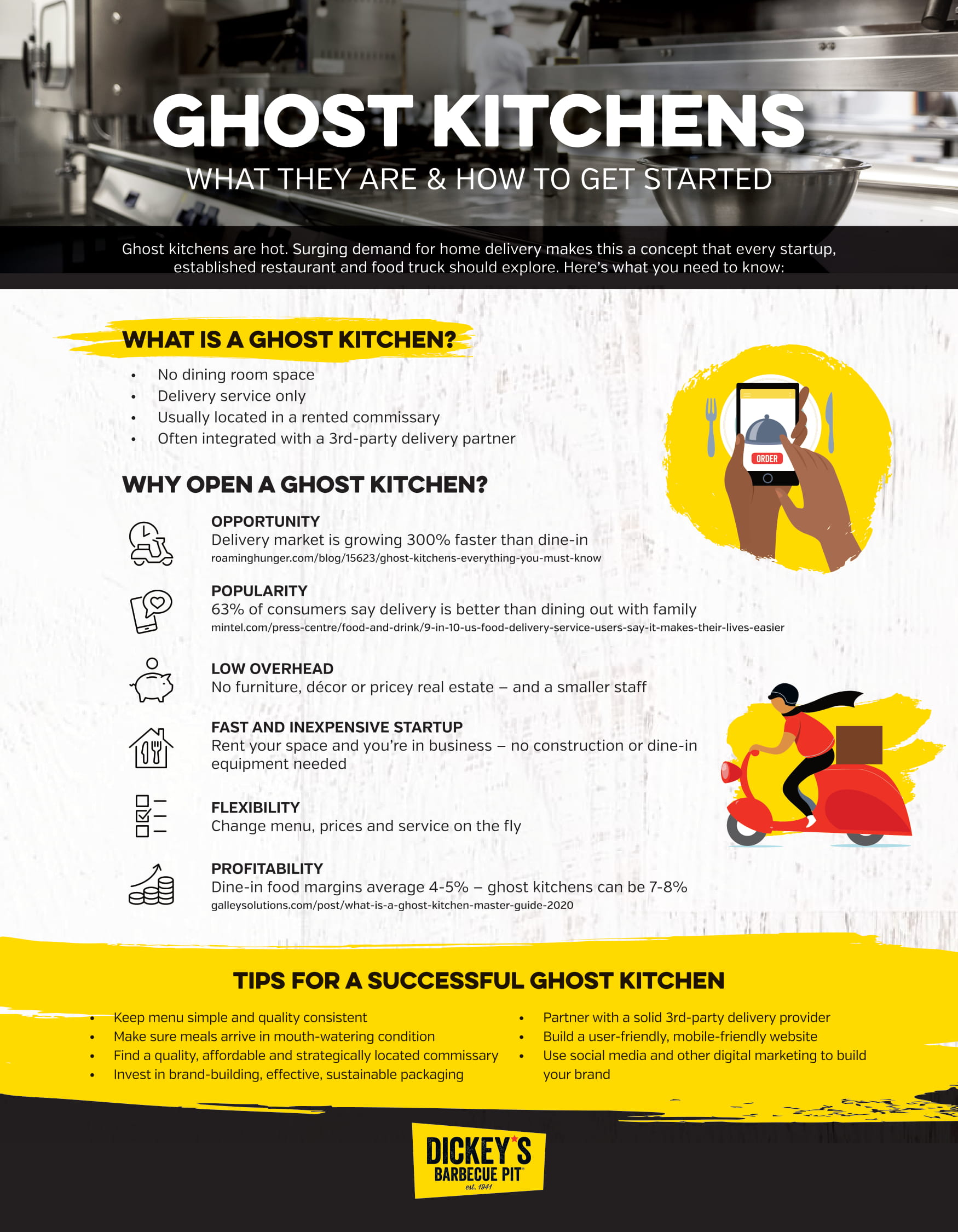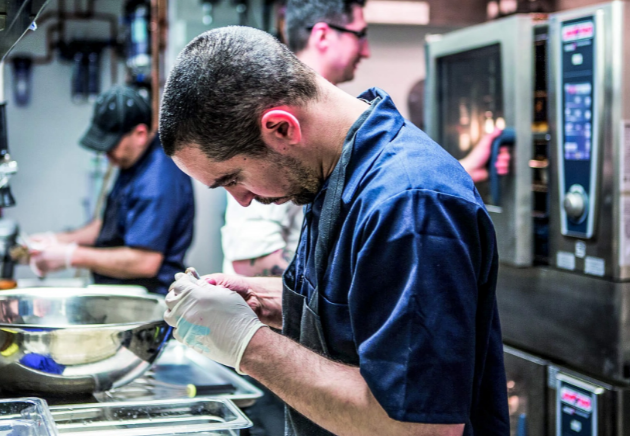COVID-19 surely shook up the way that dine-in restaurants approached their business model over the past year. It was clear that if lockdown restrictions remained as strict as they were when they were first put in place, dine-in restaurants around the country would suffer. As a result of this, restaurants looked to serve their customers through a different means: restaurant-to-consumer delivery. But considering so many people would no longer be visiting dine-in establishments, what were restaurants to do in order to cut some of the operating costs associated with their physical locations?
Luckily for these restaurants, a new and innovative strategy would serve as their saviors: ghost kitchens. Rather than operating out of traditional restaurant locations that are still equipped with all of a restaurants’ furniture and waitstaff, ghost kitchens occupy a compact space (typically within the range of 300-800 square-feet) in order to prepare food for customers. In addition to this, rather than the space doubling as a pick-up location for customers, the food is delivered strictly through third-party services or the delivery team of the restaurant.
This is an ever-growing trend, with some research firms citing the value estimation to be nearly $1 trillion by 2030. Most comparisons of this trend are derived from the evolution (or destruction) that bookstores saw as a result of Amazon. Rather than remaining forever physical or operating strictly out of a brick-and-mortar restaurant space, transition even the restaurant experience to digital. However, the major difference between these comparisons is that ghost kitchens aren’t meant to drive out restaurants around the world from finding success. Ghost kitchens empower restaurants around the country.
The featured infographic coupled with this post is essential for any restraint owner or manager unaware of the benefits that ghost kitchens could provide for their business. If you’re new to the industry, or looking for ways to revitalize your restaurant, a ghost kitchen could be your best bet. In most instances, establishing a ghost kitchen is as simple as finding a rental space that fits the needs of your restaurant in an optimal location. However, if a space like this isn’t available in your area, transforming your existing restaurant space would also work!
Regardless of how long your dine-in location has been serving your customers, the advantages of a ghost kitchen are hard to overlook. Sure, dine-in and carry-out success might be great for your business, but with an extended social media reach and established digital marketing presence, your delivery success could trump your dine-in or carry-out orders. Ghost kitchens also simplify management and the amount of necessary employees you’d have to hire thus reducing operating costs.
One important thing to consider is how successful restaurant-to-conumser delivery will be once lockdown and pandemic restrictions are loosened. Will people still prefer restaurant food from the comfort of their homes? Most likely, but there’s no way to know for sure. However, two things are for certain! The first, those who have fallen in love with food delivery aren’t just going to stop ordering delivery; the convenience is unmatched. The second is the fact that younger generations in the United States have already established their preference of digital experience and communication long before pandemic restrictions forced every experience to be digital. If this continues, this could be a thriving base of customers who will continue to prefer delivery options rather than a typical dine-in experience.
For additional information on the way ghost kitchens operate, be sure to check out the resource coupled with this post. Courtesy of Dickey’s Barbecue Pit Franchise.




